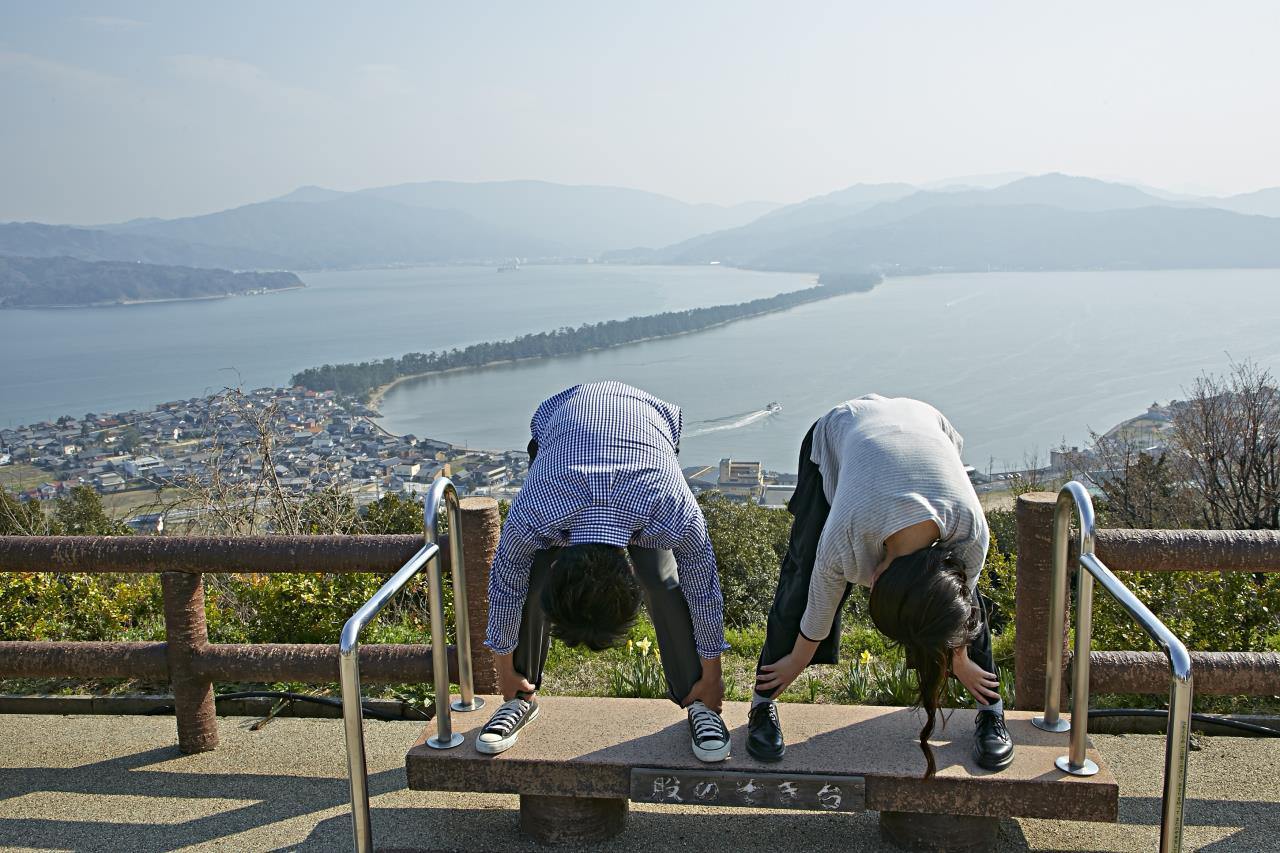
20 Top-Rated Tourist Attractions in Kyoto! Find information on tours, accommodations, and must-see sights popular among overseas visitors (2025).
Last update
Kyoto is one of the most famous tourist destinations in Japan. It has a plethora of well-known scenic spots and cultural activities for you to enjoy. But why not make your visit extra special by trying out unique vacation ideas? Go tea picking, make ceramic pottery, and stay overnight at an old traditional home. This page offers information on Kyoto City as well as Kyotango City in the far north and the rest of Kyoto prefecture. Tourists who have only had an experience of visiting Kyoto City will get to have new experiences. Come to Kyoto as part of your solo trip to treat yourself, or as a date to make romantic memories. And of course, you’re always welcome to come for a simple visit to create exciting memories with someone dear. Top-rated attractions in Kyoto Prefecture have been carefully selected to make your trip to Kyoto unforgettable.
1. Maizuru City: Buddha Dance at Matsunoo Temple
Buddha Dance (Hotokenomai) is performed once a year. Etch the art of its traditional performance in your memory.
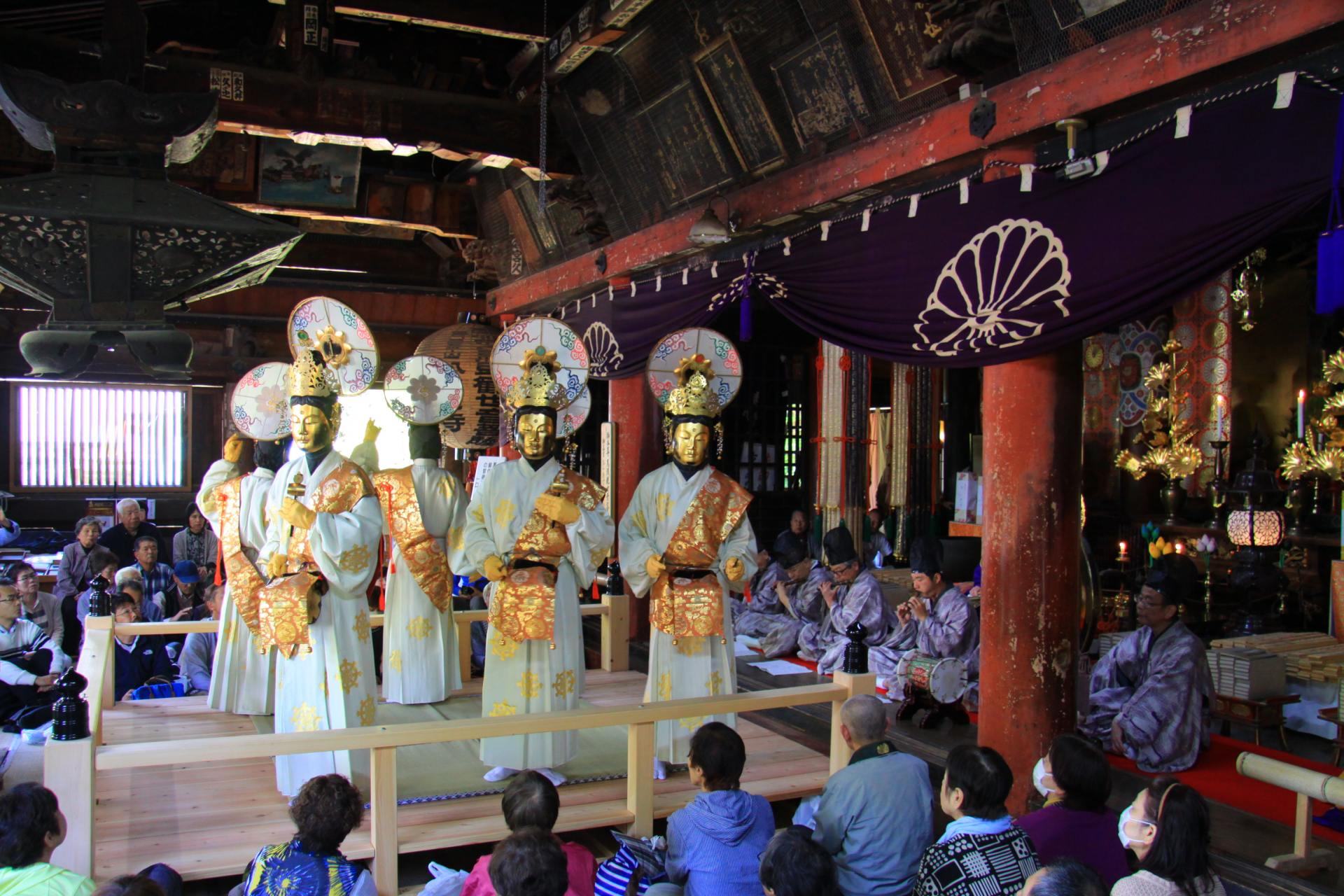
Matsunoo Temple is located on the slopes of Mt. Aoba, also known as Wakasa Fuji. The famous Buddha Dance (Hotokemai) is a nationally important intangible folk cultural property. It celebrates the birth of Buddha and is annually dedicated on the eighth day of Uzuki (the fourth month of the lunar calendar), which currently falls on May 8th. Buddha Dance is performed by six dancers. Three kinds of Buddhas are featured, and two dancers each represent one of the Buddhas (Shakyamuni Buddha, Dainichi Buddha, and Amida Buddha). They dance to music played on the traditional Japanese Hichiriki flute and Ryuteki flute. This traditional dance was passed down from the continent, and its existence in Matsu no Odera Temple can be traced back to the early Edo Period. Buddha Dance gives the audience a glimpse into court music and dance that no longer exist, and the sight of dancers gracefully moving to unique rhythm with their mysterious charm will fascinate visitors and captivate their attention. Come to Kyoto and see this valuable traditional art that is only performed once a year.
- Address
- 532 Matsuo, Maizuru-shi, Kyoto
- Inquiries
- 0773-62-2900
- Official Website
- Official Website
- More Information
- The Gate to KANSAI
2. Ine Town: Boat Houses of Ine Town
The sight of boat houses on the sea will look like a scene from a different world. Dynamic Mondori-style fishing tour is an experience that can’t be missed!
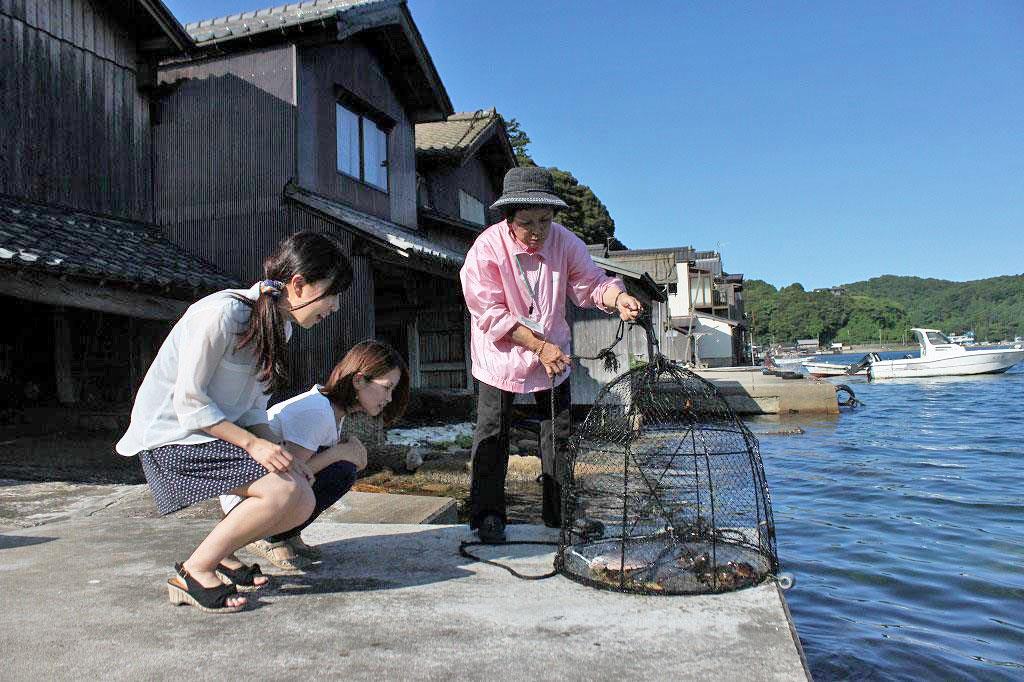
The cluster of boat houses in Ine Town looks as if they’re floating on the sea. Nearly 300,000 tourists visit here every year to see this important preservation district of historic buildings that is well known both domestically and internationally. Boat houses, called Funaya, are buildings constructed to protect boats from wind, rain, and insects. In the past, wooden boats were used for fishing. They were stored on the first floor of the Funaya structure, while the second floor was used to dry fishing nets and store fishing gear. Ine Town has several tours that give visitors an opportunity to experience a life in Funaya. One of the popular tours, “The Complete Ine Town Experience with a Funaya Guide,” features Mondori-style fishing that uses fish bones and skin as bait. In that tour, visitors will get a first-hand look at this dynamic Mondori-style fishing. They will get a chance to pull up a rope attached to a huge basket from the bottom of the sea to be delightfully surprised by a sight of fish splashing on the inside. The tour includes a stroll through the Funaya neighborhood, a stop at a famous local sake brewery founded in 1754, and an enjoyable experience of life in Ine Town.
- Address
- 491 Hirata, Ine-cho, Yosa-gun, Kyoto (Meet at the Ine Tourist Information)
- Inquiries
- 0772-32-0277 (Ine Town Tourist Association)
- Official Website
- Official Website
- More Information
- The Gate to KANSAI
3. Yosano Town: KUSKA Handweaving Workshop
Enjoy touring the handweaving workshop and shopping for renewed traditional crafts.
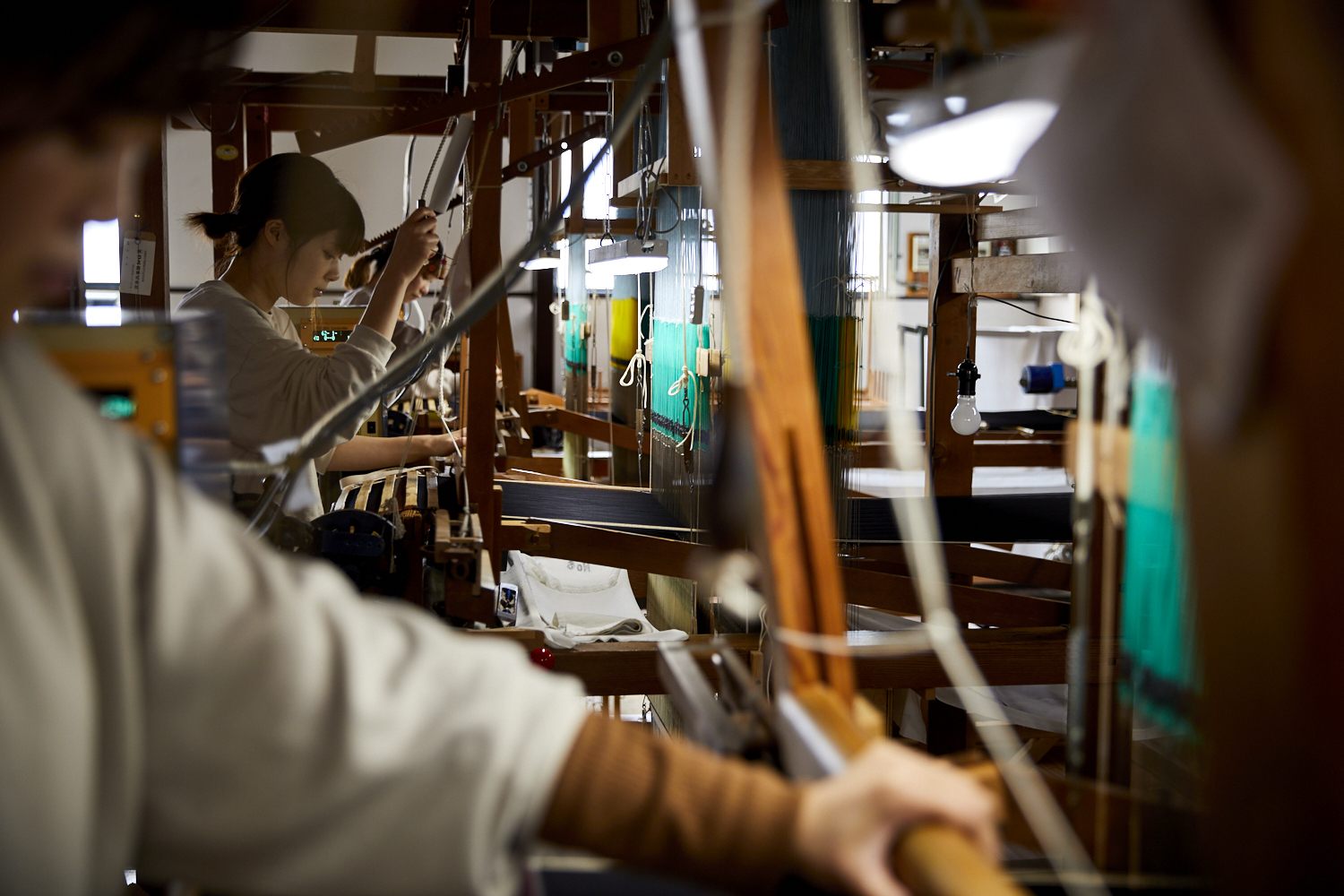
Tango in Kyoto is famous for Tango Chirimen textiles and is the largest production center of handwoven silk in Japan. KUSKA values and sticks to manual production from thread making to dyeing and handweaving. The workshop mainly offers products that fuse values of tradition, fashion, and art that are not swayed by fast-moving trends. KUSKA creates neckties, scarves, and other fashion accessories reminiscent of the traditional craft of Tango Chirimen textiles. Visitors are welcomed to observe artisans at work in their workshop next to the store. Many tourists from overseas visit to see the skill of artisans in Japan with their own eyes. A handweaving course is also available at the workshop for you to try and make your own souvenir to take home (fee required). *The handweaving course is temporarily closed as of March 2022. It’s scheduled to reopen in the future.
- Address
- 384-1 Iwaya, Yosano-cho, Yosa-Gun, Kyoto
- Inquiries
- 0772-42-4045
- Official Website
- Official Website
- More Information
- The Gate to KANSAI
4. Nantan City: Miyama Kayabuki-no-Sato
Like a scene from folktales with thatched-roof houses, Miyama is a city with a feel of traditional Japanese town.
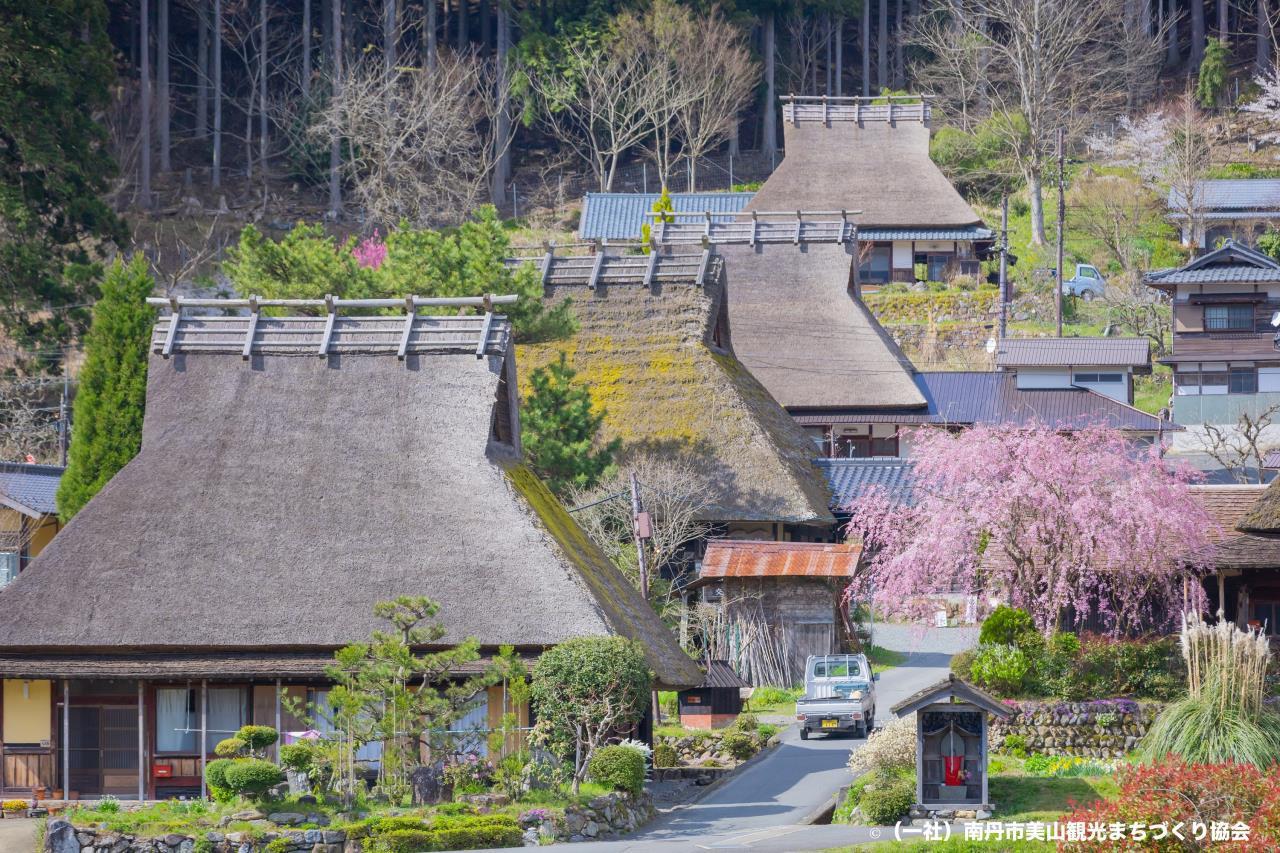
Miyama Town in Nantan City is located in the approximate center of Kyoto. In the north of the settlement is an area called Kayabuki-no-Sato with 39 thatched-roof houses that offer a nostalgic view of the Japanese countryside. In 1993, this settlement was designated as an important preservation district of historic buildings for exemplifying reverence for the original landscape of Japan. Here, nature changes its colors every season—pink cherry blossoms in spring, fresh green leaves in summer, yellow and red foliage in fall, and white snow-covered landscape in winter. In addition to enjoying the beautiful landscape of Miyama Town, visitors can also visit Miyama Folklore Museum in the settlement for a tour of a thatched-roof house. The Little Indigo Museum features an exhibition of rare indigo items collected from around the world. If you’re curious about a life in traditional Japan, you can even enjoy an overnight stay at a private home. Miyama Town is perfect for those who want to replace the hustle and bustle of city with a peaceful stroll through old Miyama streets to relax their mind and soul.
- Address
- Kita, Miyama-cho, Nantan-shi, Kyoto
- Inquiries
- 0771-75-1906 (Kyoto Miyama Tourism Association)
- Official Website
- Official Website
- More Information
- The Gate to KANSAI
5. Kameoka City: Shoraku Kiln
Enjoy making pottery at a kiln with traditional style loved by Sen No Rikyu.
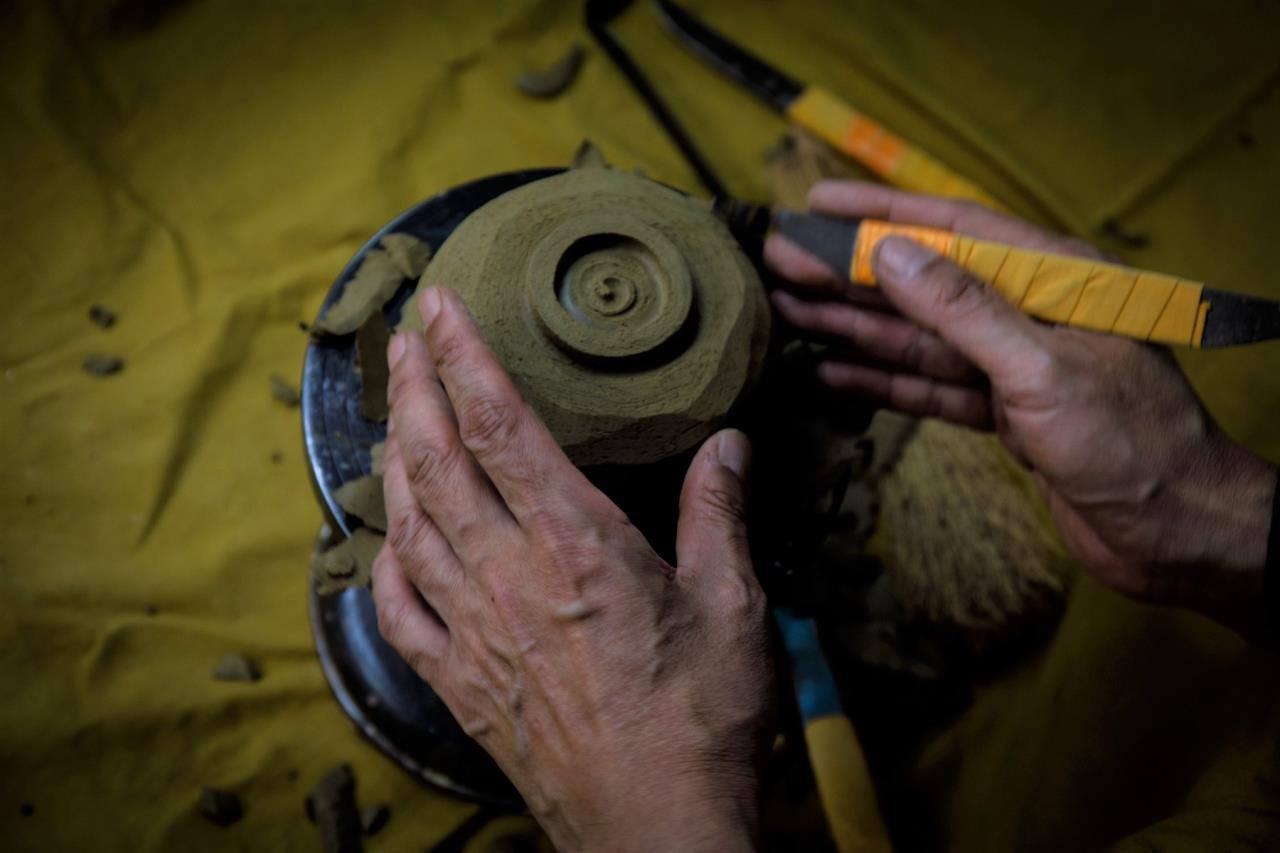
Shorakugama is a kiln with a history of some 120 years. This kiln specializes in creating Rakuyaki (tea cups used in tea ceremonies). Sen No Rikyu, a man who greatly influenced tea ceremony, called this style of cup the zenith of aesthetic form. One unique feature of Rakuyaki is in its creation process. Rakuyaki tea cups are shaped and molded by hand without using a potter’s wheel. Because the cup is made by hand, its uniqueness is enhanced by any slight distortion that occurs in the creation process. Shoraku Kiln provides a course that allows visitors to make a Black Rakuyaki tea cup for Matcha tea using a hand-molding technique. Participants can enjoy Matcha tea and Japanese sweets as well as learn tea manners and the history of tea cups. There’s even an option for you to send the tea cup that you made to any location in Japan and overseas. Immerse yourself in the Rakuyaki art through the half-day course on making tea cups.
- Address
- 2-4 Dogatani, Kamihara, Higashibetsuin-cho, Kameoka-shi, Kyoto
- Inquiries
- 0771-27-3001
- Official Website
- Official Website
- More Information
- [The Gate to KANSAI(https://www.the-kansai-guide.com/en/directory/item/11502/)
6. Kyoto City: Toei Kyoto Studio Park
Uzumasa, Kyoto – the birthplace of Japanese movies.
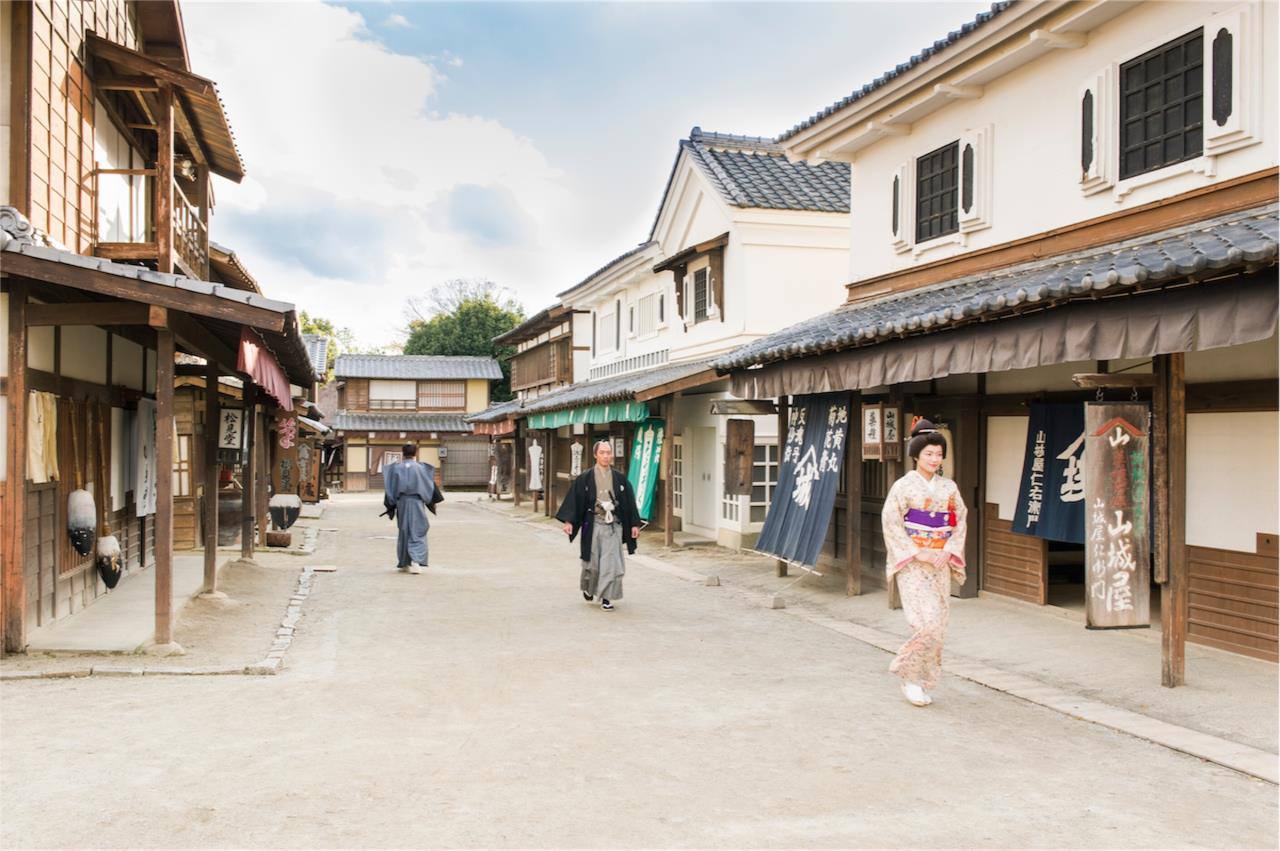
When you come to Kyoto, you must visit the interactive theme park devoted to Japanese movies. At Toei Kyoto Studio Park, you will be able to see a huge outdoor set of Edo-era Japan where the movie “Rurouni Kenshin” was filmed. Ninja and samurai shows take place every day. Visitors can dress up as ninjas, learn ninja skills, and enjoy other hands-on courses. “3D Maze – The Ninja Fort” is a popular attraction that you can’t miss. The three-story indoor maze has exciting ninja traps that will have both children and adults enthralled. After enjoying all the fun attractions, visitors can find refreshments at one of the cafés or restaurants scattered throughout the park for a snack or meal. Spend the full day at Studio Park and immerse yourself in the world of movie-making and Edo-era. Other events featuring themes from popular games and animation are also held, so we encourage you to check our current events before visiting the Park.
- Address
- 10 Uzumasa Higashihachioka-cho, Ukyo-ku, Kyoto-shi, Kyoto
- Inquiries
- 0570-064349 (Navigation dial)
- Official Website
- Official Website
- More Information
- The Gate to KANSAI
7. Wazuka Town: Kyoto Obubu Tea Farm Tour
Immerse yourself in an exciting day of a tea-picking girl in Wazuka, the homeland of tea in Kyoto♪
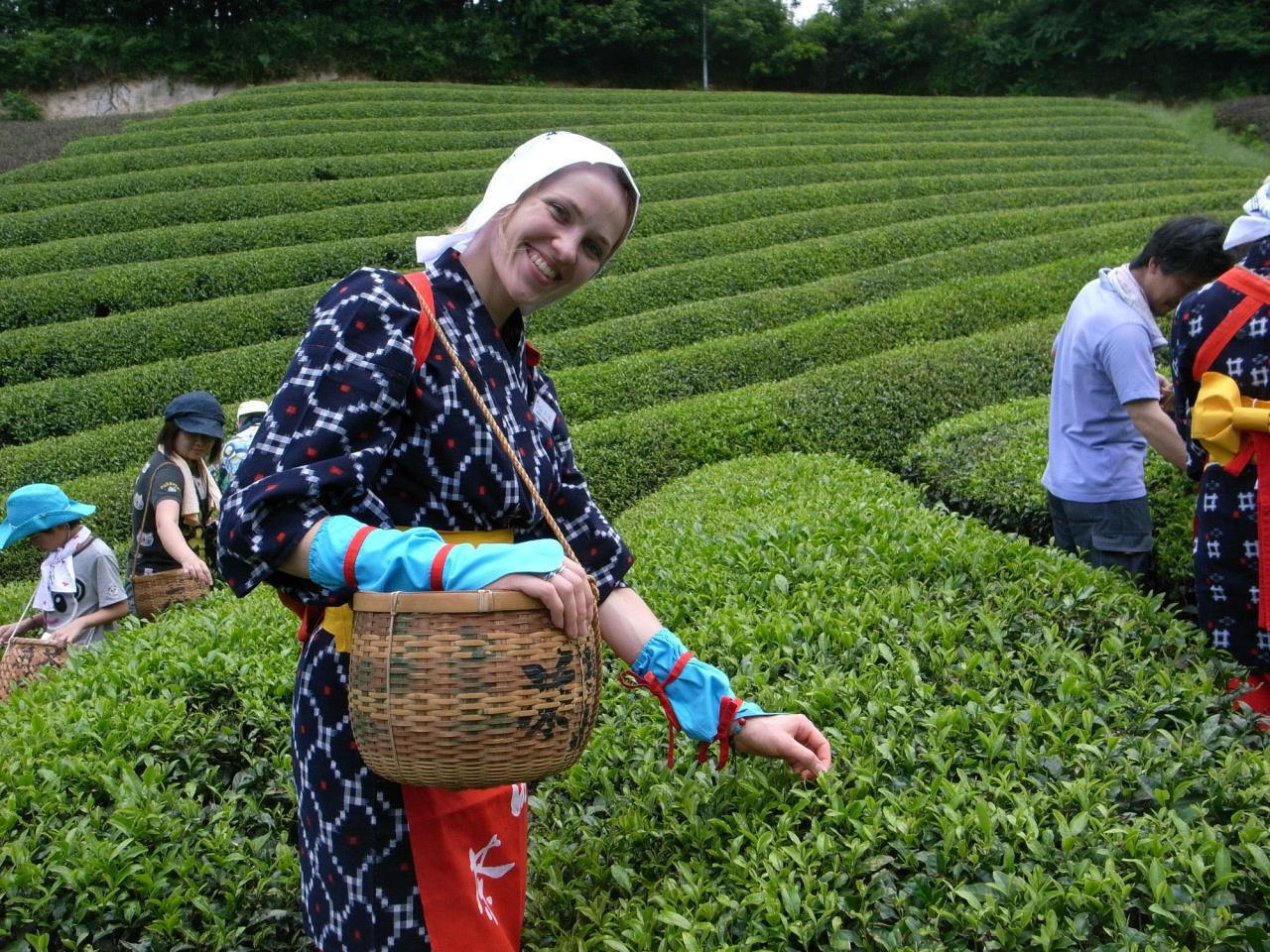
Wazuka Town has approximately 800-years of history as a center of Uji tea production. The scenery of tea plantations surrounded by mountains and a gentle river flowing in the middle of the valley will bring back nostalgic memories in your mind. Kyoto Obubu Tea Farm offers tours throughout the year with the hope of spreading the rich appeal of Japanese tea. The tour will take you through their tea farm and tea factory and offers tea tasting session and a lesson on making tea. The popular tea-picking activity is offered in spring, summer, and autumn. Another popular hands-on activity is hand-rolling hand-picked tea leaves. Limited number of tea-picking girl costumes are available for rent. A picture of you dressed up as a tea-picking girl on the tea farm will make a wonderful souvenir.
- Address
- 2 Sono-otsuka, Wazuka-cho, Soraku-gun, Kyoto (Meet at Kyoto Obubu Tea Farm Office)
- Inquiries
- 0774-78-2911
- Official Website
- Official Website
- More Information
- The Gate to KANSAI
8. Uji City: The Tale of Genji Museum
The only museum in the world recreating The Tale of Genji. Don’t forget to check out the museum’s original works.
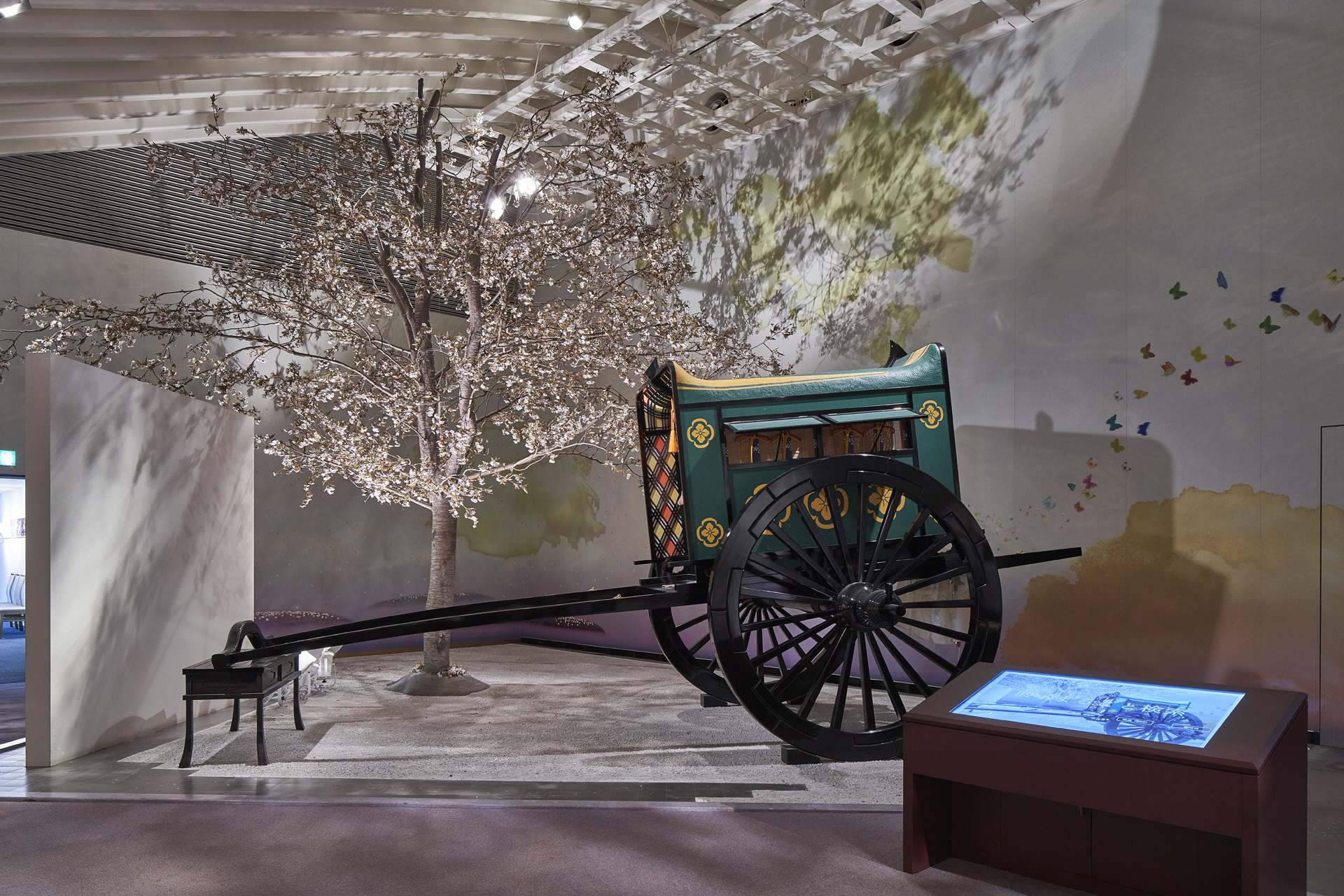
The Tale of Genji is the oldest full-length novel in the world, and Uji was the stage of the final ten chapters of this novel. The Tale of Genji Museum is an irresistible place for Genji fans for its recreation of the world of Hikaru Genji. The museum has a display of a model of Rokujo-in (Hikaru Genji’s residence) and a full-sized reconstructed oxcart, as well as a collection of over 4,500 books. Original films based on “The Ten Uji Chapters” and animated movies are aired, allowing visitors to learn about The Tale of Genji. Information on some of the exhibitions is available in several languages in audio tablet guides for overseas visitors (*temporarily unavailable as of March 2022). The Tale of Genji is a novel that has been loved for over a thousand years since its creation. Even those that are not familiar with the story will no doubt be pulled into its flamboyant world when they step into this museum.
- Address
- 45-26 Uji Higashiuchi, Uji-shi, Kyoto
- Inquiries
- 0774-39-9300
- Official Website
- Official Website
- More Information
- The Gate to KANSAI
9. Uji City: Manpuku-ji Temple
Architectural beauty of a rare Zen Buddhist temple with delicious vegetarian cuisine.
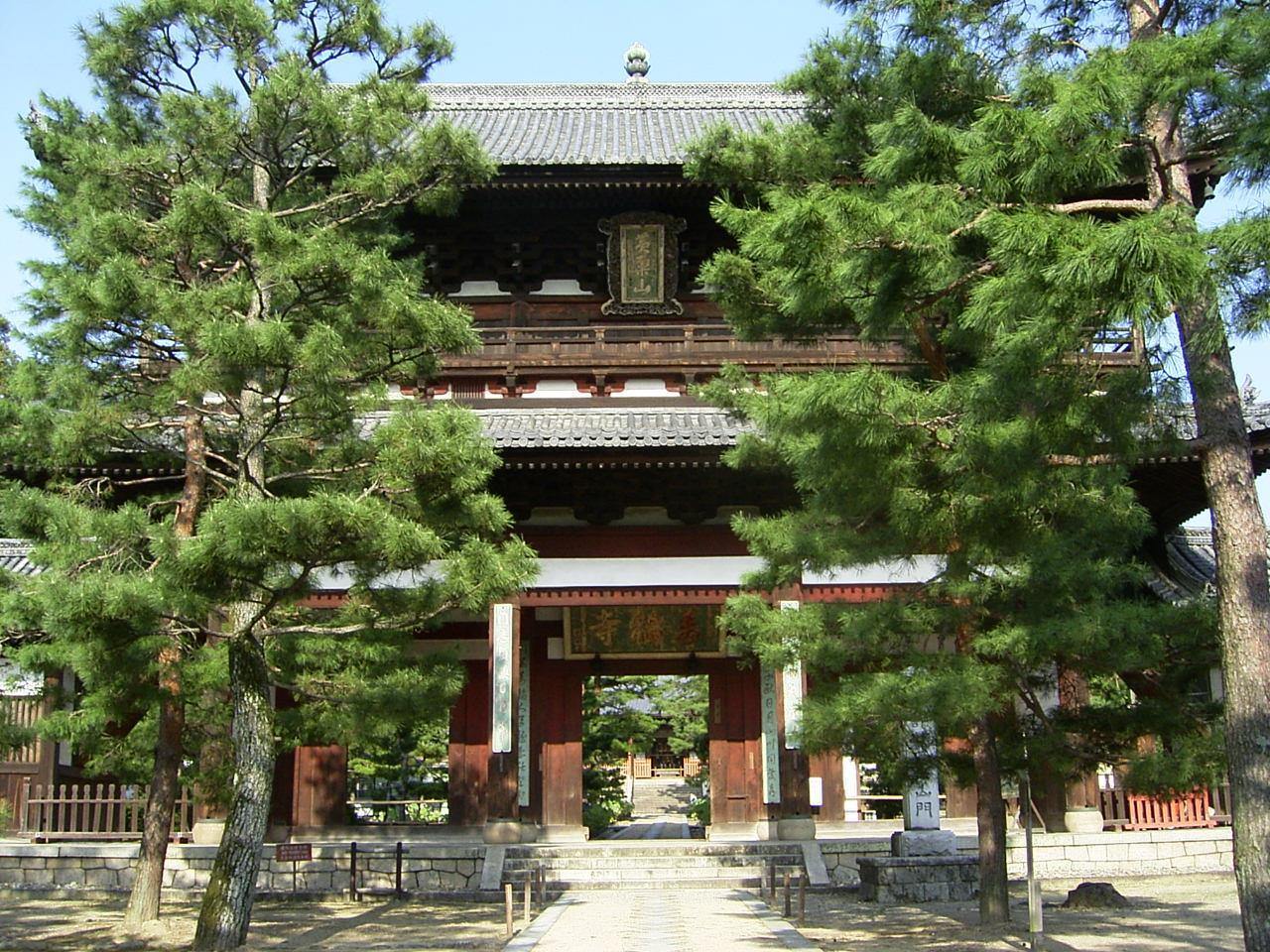
Manpuku-ji is an Obaku sect temple, which is one of Japan’s three major Zen sects. It was opened in 1661 by a Chinese Zen monk, Ingen Ryuki. This temple is constructed in the architectural style of Chinese Ming dynasty and stands with an air of dignity as if projecting Buddha dwelling in the mountain of Uji. Some of its interesting features include unique construction methods that are not usually seen in temples in Japan. A design called “Manji Kuzushi” is found in front of the lecture hall, and an arched “Obaku ceiling” is also featured famous for its inspiration from the shape of a dragon’s stomach. Some of the exhibits’ audio guides are available in English to help overseas visitors deepen their understanding of Manpuku-ji Temple’s history. This temple is also unique in offering special cuisines like Chinese-style vegetarian menu called “Fucha” (reservation required). “Aoi” set meal is also offered to two groups each day (8,888 yen per person), and it includes a tour of the premises led by a Buddhist monk as a guide. Enjoy a relaxing time in this solemn atmosphere with food that conveys the taste of season and culture.
- Address
- 34 Gokasho Sanbanwari, Uji-shi, Kyoto
- Inquiries
- 0774-32-3900
- Official Website
- Official Website
- More Information
- The Gate to KANSAI
10. Kameoka City: Yunohana Onsen
Healing retreat in the serene atmosphere of a mountain village deep in Kyoto.
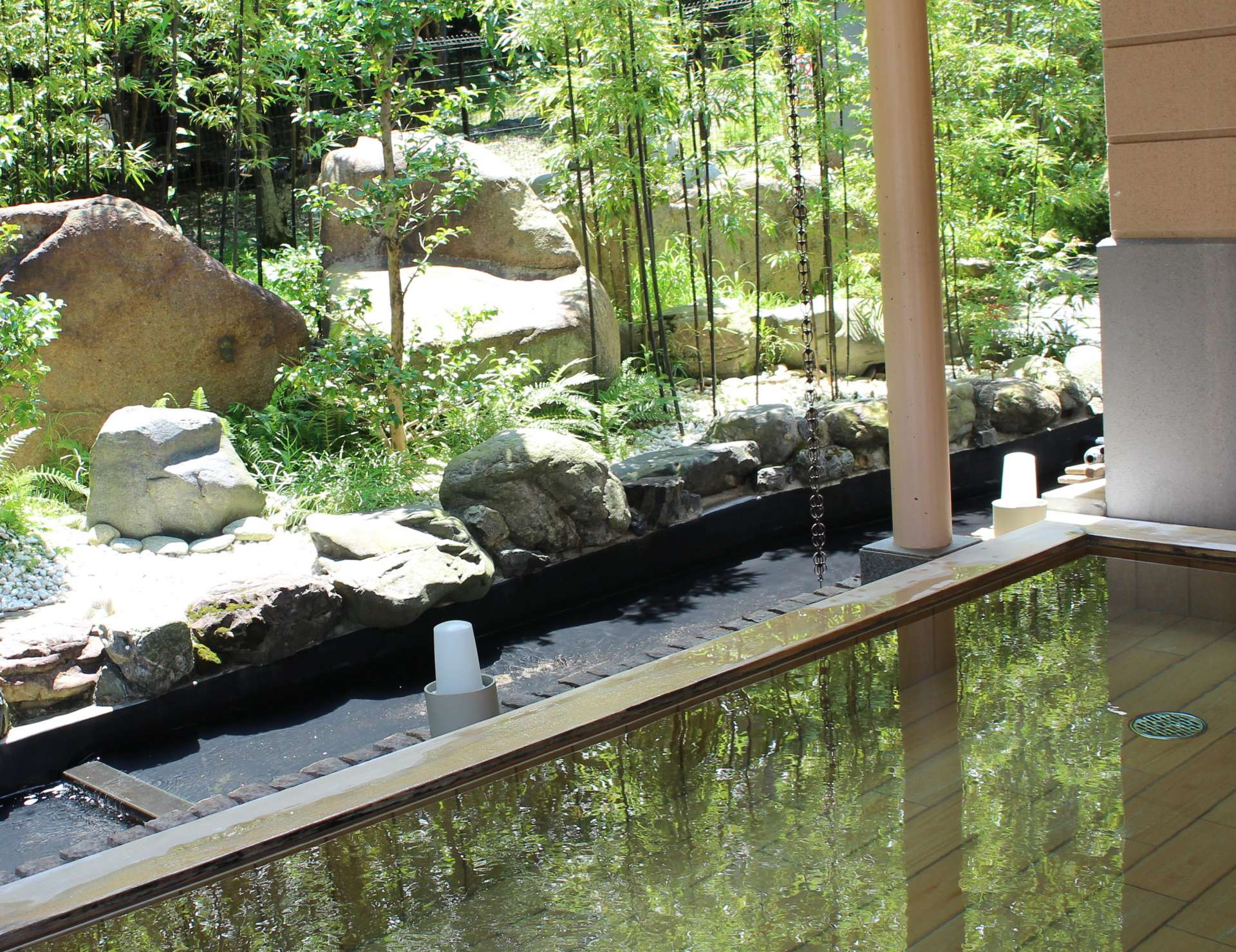
Yunohana Onsen is a hot spring village located in a quiet mountain ravine approximately 7 kilometers from the center of Kameoka City, Kyoto. This village has legends of warlords journeying here to heal their sword wounds in the Warring State Period. The water here consists of natural radium that is effective for neuralgia, muscular aches, fatigue, and more. Hot water will feel smooth on the skin, and hot springs of the finest quality will allow visitors to relax from deep within their core. Visitors can come for the day to enjoy bathing in the hot spring, or they can stay overnight at one of the many ryokans (inns) that serve wonderful seasonal dishes featuring natural seasonal ingredients connecting with mother nature: wild plants in spring, sweetfish in summer, matsutake mushrooms in autumn, and local sake and boar stew in winter. Take a healing journey to Kyoto to enjoy clear air, breathtaking mountain valleys, finest hot springs, and delicious seasonal dishes that will satisfy all five senses.
- Address
- Yunohana Onsen, Hiedano-cho, Kameoka-shi, Kyoto
- Inquiries
-
0771-22-5645 (Yunohana Onsen Tourist Ryokan Association)
0771-22-0691 (JR Kameoka Station Tourist Information Center) - Official Website
- Official Website
- More Information
- The Gate to KANSAI
11. Kyotango City: Tateiwa Rock Formation
Giant rock carved by nature over millions of years! Get your picture taken with this rugged natural phenomenon in the background.
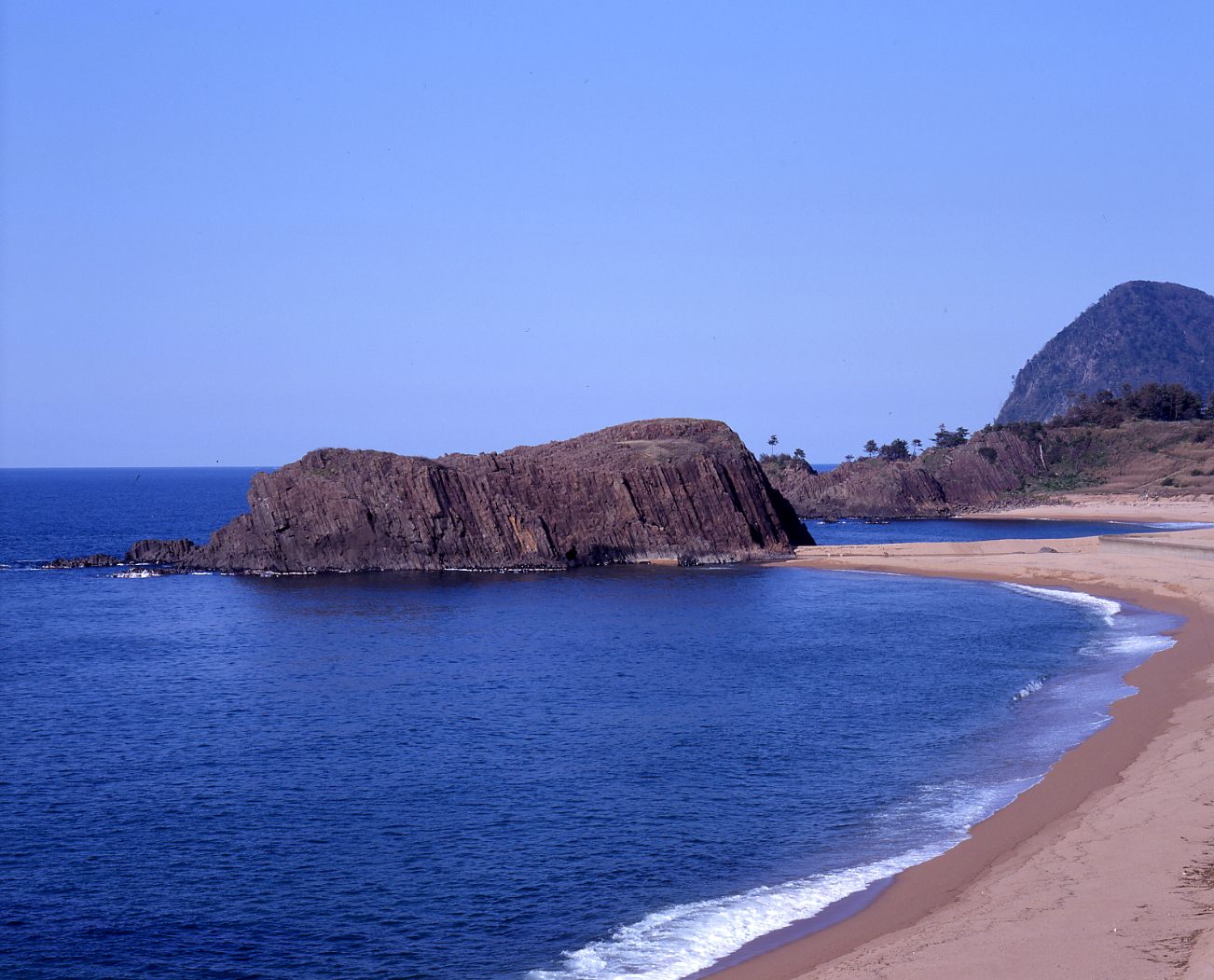
Tateiwa is the symbol of Nochigahama Beach. Tateiwa is a rock bed formed by cooled magma that erupted from underground 15 million years ago. Its naturally-formed rough surface has been exposed to wind, rain, and waves through its long history. It stands approximately 20 meters high and gives its observers an imposing bizarre look from afar. According to legends, one of the three demons defeated by Shotoku Taishi’s younger brother, Imperial Prince Maroko, was sealed in this stone. It is said that you can hear the demon howling in winter and on rough days even today. The best place to see this ruggedly majestic Tateiwa is at a location slightly far away from it with the ocean in the background. It stands out in stark contrast to the deep blue color of the Sea of Japan. A picture of you with Tateiwa and the Sea of Japan in the background will become a photo to treasure.
- Address
- Taiza, Tango-cho, Kyotango-shi, Kyoto
- Inquiries
- 0772-69-0640 (Cultural Property Protection Division, Kyotango City Board of Education)
- Website
- Official Website
- More Information
- The Gate to KANSAI
12. Fukuchiyama City: Fukuchiyama Castle
Fukuchiyama Castle—the symbol of North Kyoto. Enjoy the panoramic view of Fukuchiyama City from the only castle tower that you can go up in Kyoto.
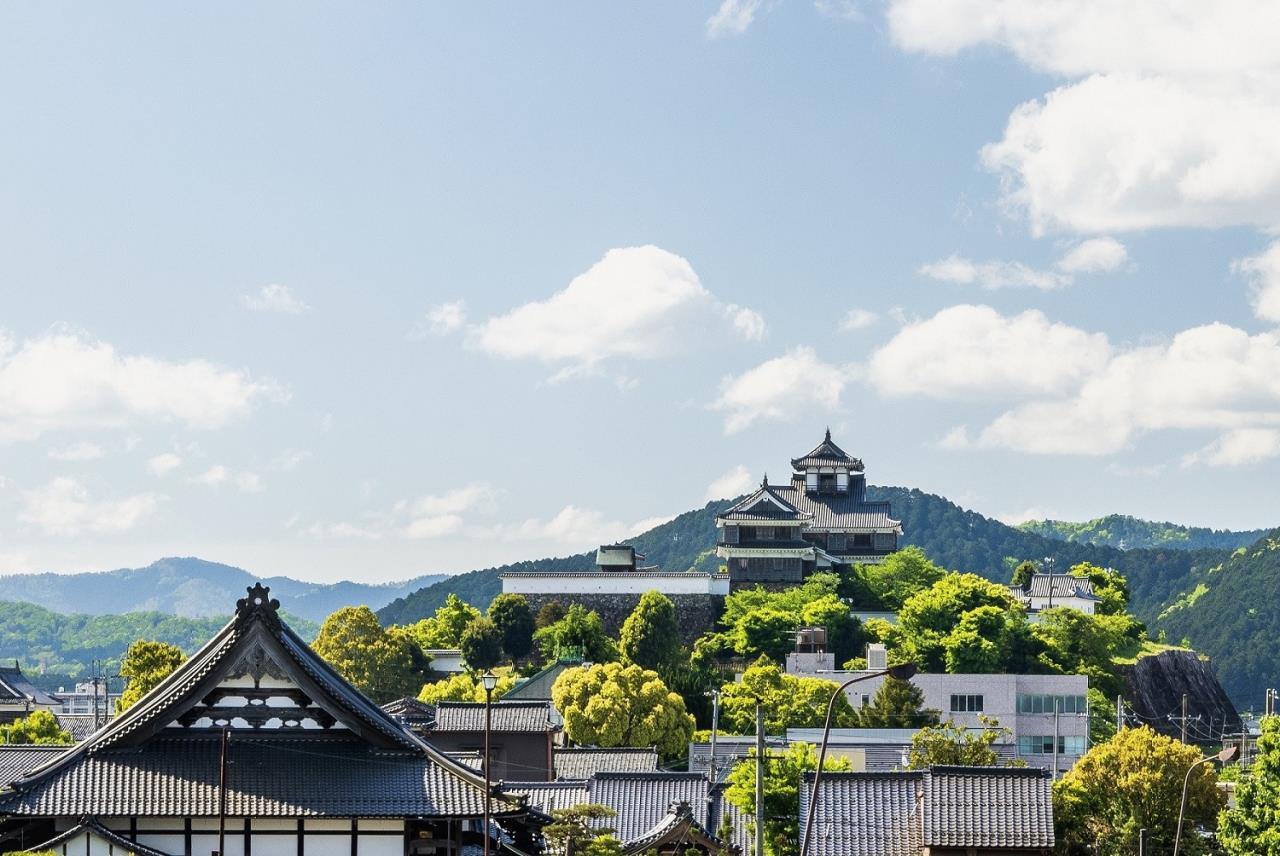
Fukuchiyama Castle was built by Akechi Mitsuhide in 1579. It is the only castle in the North Kinki area with an extant castle tower. It is also the only castle in Kyoto where visitors can enter and still go up to the top. The highest point of the castle is the 4th level of its tower. From there, visitors can get a panoramic view of the mountains standing in the distance and the city streets of Fukuchiyama lying below. Another noteworthy feature is the stone wall that serves as the foundation of the castle. Gorinto towers, gravestones, stone mortars, and other stonework that can be found in this wall are also historic. Some of these have been in existence in the same location since the castle was built over 400 years ago. The castle can also be enjoyed for its entirely different look depending on the angle and the location of the observer. Additionally, the castle’s atmosphere changes completely with each season. The view of the snow-covered Fukuchiyama Castle is especially magnificent in the wintertime. The beauty of the castle will be a lifelong memory that you will treasure.
- Address
- 5 Aza-Naiki, Fukuchiyama-shi, Kyoto
- Inquiries
- 0773-23-9564
- Official Website
- Official Website
- More Information
- The Gate to KANSAI
13.Around Kyoto City: Sagano Trolley
Arashiyama is famous for its Sagano Trolley! Take a trolley ride and enjoy Kyoto’s nature to your heart’s content.
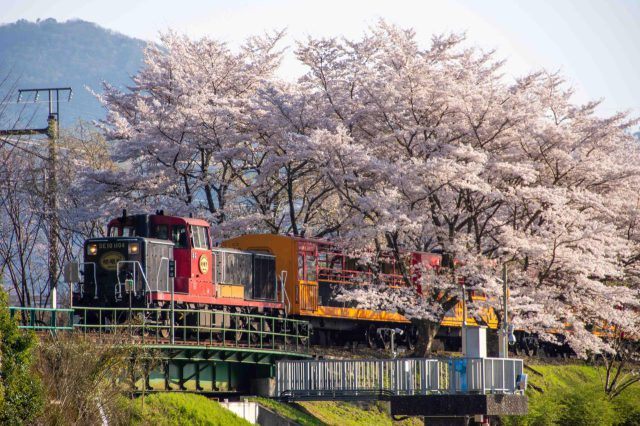
One can say that Arashiyama is one of the most iconic tourist destinations in Kyoto. You can enjoy the scenic beauty of Arashiyama from one of the few trolley trains left in Japan. Sagano Trolley runs between Arashiyama and Kameoka in the suburbs of Kyoto City. This 7.3 km distance will take approximately 25 minutes (one way) during which you are treated to the beautiful sight of Hozu Gorge and a panoramic view of the great natural expanse from trolley windows. You may even chance upon scenic or hidden spots that you can’t see when traveling on foot or in a car. Visitors will be welcomed by cherry blossoms in spring, fresh green in summer, autumn leaves in fall, and other beautiful natural sights each season. A travel package combining Hozu River Boat Ride that travels down a 16 km mountain river is also popular. If you would like to enjoy both the trolley ride and the boat ride, be sure to check out this deal.
- Address
- (Torokko Saga Station) Kurumamichi-cho, Sagatenryuji, Ukyo-ku, Kyoto-shi, Kyoto
- Inquiries
- 075-861-7444 (Voice guidance)
- Official Website
- Official Website
- More Information
- The Gate to KANSAI
14.Miyazu City: Amanohashidate
One of the Nihon Sankei (Three Most Scenic Spots) in Japan! Turn your back, bend over, and look between your legs for the traditional way to take in the amazing view of Kyoto by the sea.
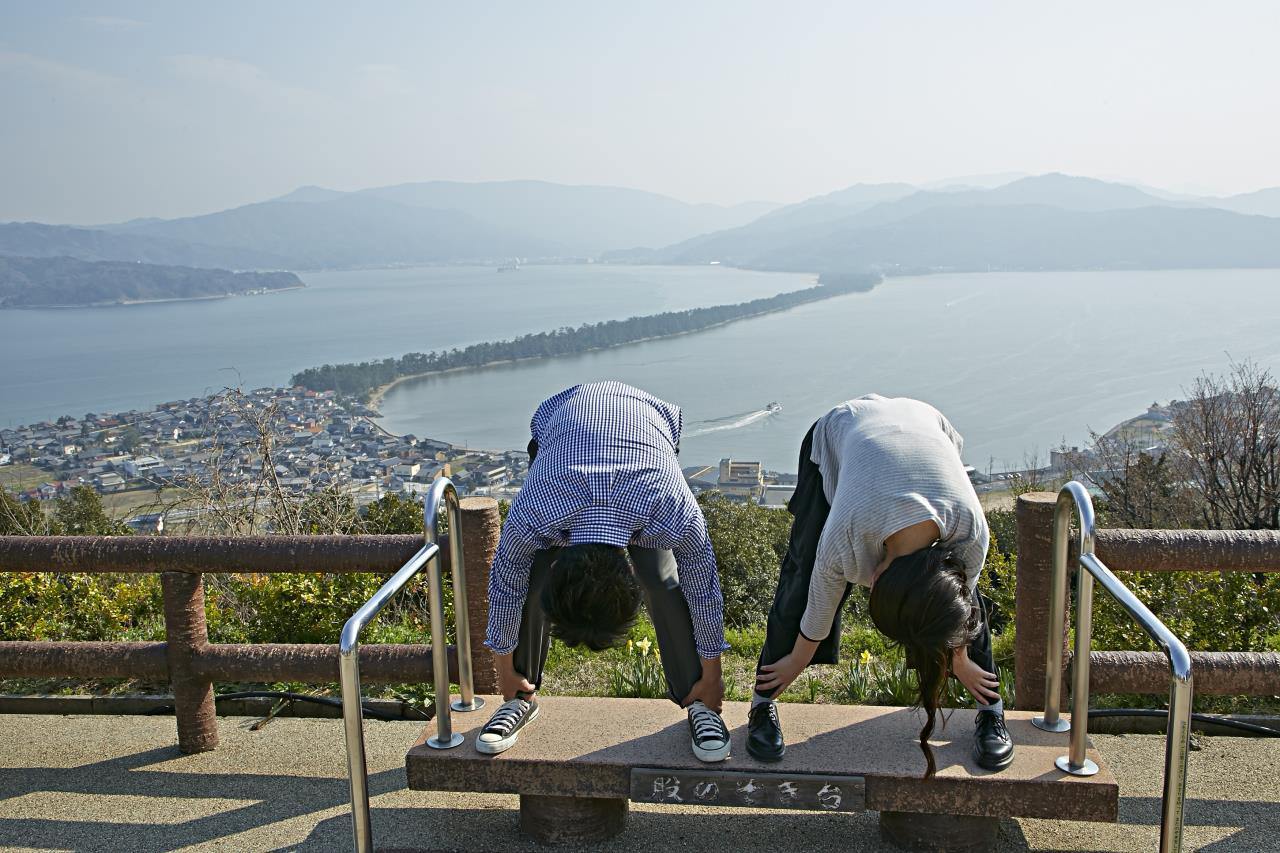
Located in the northern region of Kyoto Prefecture, Amanohashidate is one of the Three Most Scenic Spots in Japan. Some 6,700 pine trees grow on a sandbar that extends for approximately 3.6 km. This uniquely shaped terrain resembles a bridge leading to heaven, and this distinctive sight became the origin of its name “Amanohashidate” (bridge to heaven). There are many activities here for you to enjoy like walking or cycling along rows of pine trees, cruising on a sightseeing boat, bathing in Onsen hot springs, and swimming in the sea. One of the top recommendations is for you to go see the view from our four observatories located around Amanohashidate. Two of the observatories are especially famous: Amanohashidate View Land and Kasamatsu Park. Here, visitors can turn their back to the view, bend over, and look between their legs to have a view of Amanohashidate climbing up through the sky like a dragon. The beauty of Amanohashidate that looks as though it’s floating on the sea combined with its surrounding mountains and townscape will stay in your memory for a lifetime.
- Address
- Amanohashidate Park, Aza-Monju, Miyazu-shi, Kyoto
- Inquiries
- 0772-22-8030 (Amanohashidate Station Tourist Information Center)
- Official Websit
- Official Website
- More Information
- The Gate to KANSAI
15.Kyotango City: Amino Shrine
A shrine that houses the god of sericulture and Tango Chirimen textiles in Kyotango, the production center of silk fabric.
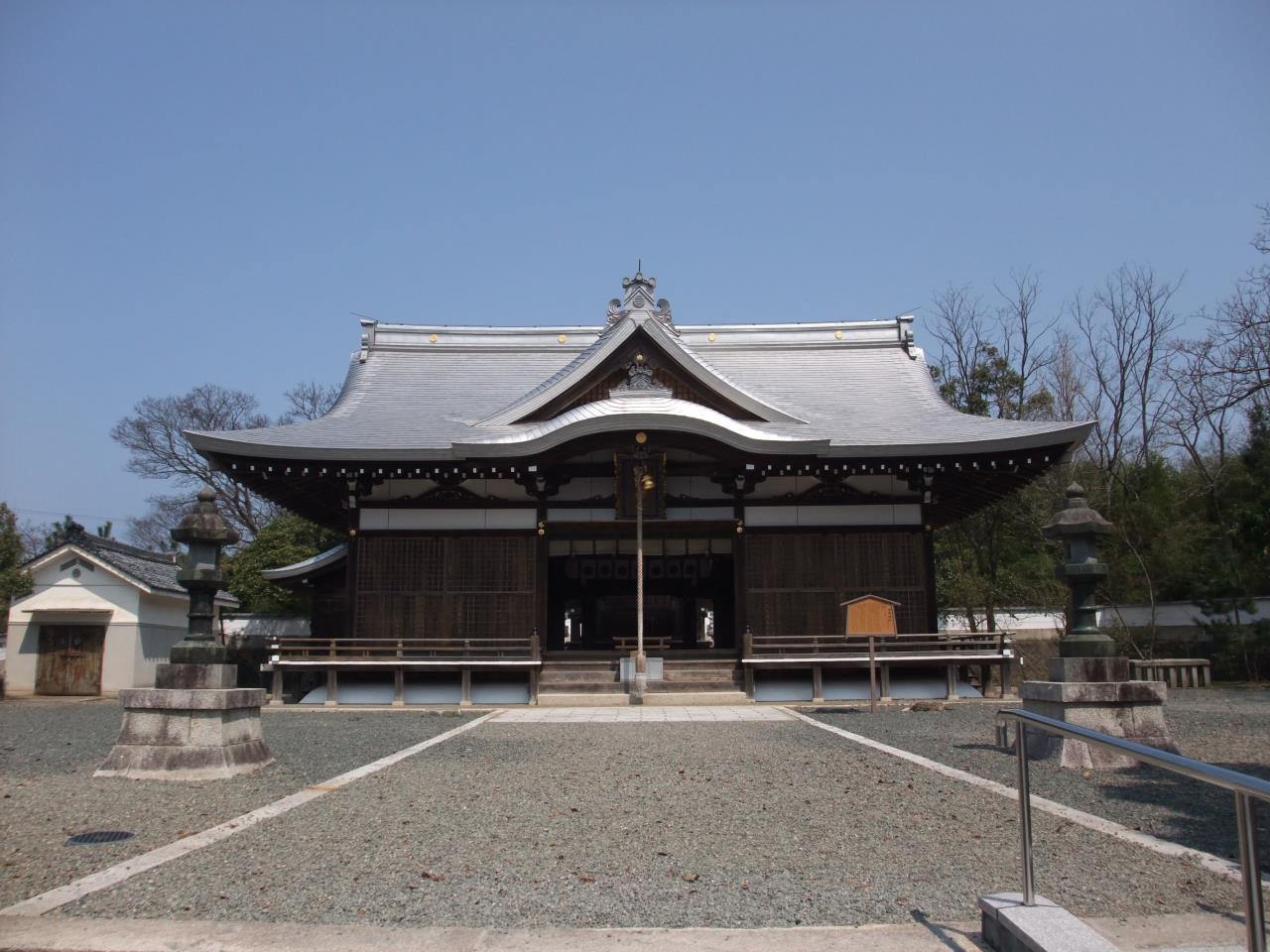
Amino Shrine is located in Amino Town of Kyotango City, Kyoto. It is a prestigious shrine with eight wings, and the main hall is registered as national tangible cultural property. Koori Shrine located in the shrine precinct is especially famous, and it once served as the main hall. It is also one of the components of Japan’s Heritage Site, “Tango Chirimen Textile Road, A 300-Year History of Weaving Silk Crepe Textiles.” This Shrine serves as a sacred space that enshrines the god of sericulture and Tango Chirimen Textiles. Visitors can immerse themselves in this unique atmosphere enriched with 300 years of history and textile culture. Three gods are enshrined here, and Urashima legend was based on Mizunoe Urashimako-no-kami, one of these gods. The shrine is also known to offer “Tokowaka” (eternal youthful spirit), and popular souvenir is Tango Chirimen amulet bag with omikuji (fortune-telling slip).Why not buy one yourself as a keepsake.
- Address
- 789 Amino, Amino-cho, Kyotango-shi, Kyoto
- Inquiries
- 0772-72-0079
- Official Website
- Official Website
- More Information
- The Gate to KANSAI
16.Kyotango City: Miso-Making Workshop
Experience the world of yeast through miso-making at a workshop featuring Japanese food culture.
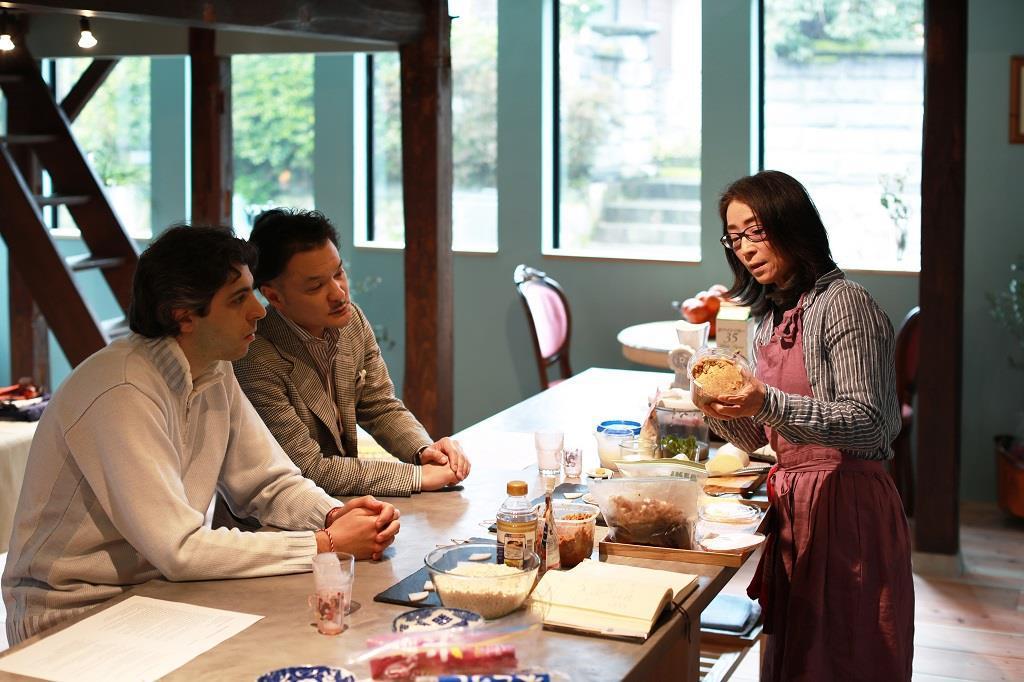
Miso soup is deeply rooted in Japanese food culture. It’s no exaggeration to say that miso soup is Japan’s regional cuisine. Tourists can take a course on making miso for miso soup at a unique workshop called “tabel table” in Kyotango City. This course will take approximately four hours. It includes a section on hands-on miso-making, but also a section on tasting various malted rice products like miso and soy sauce. After making miso, a healthy lunch made with local ingredients is served to allow participants to further deepen their understanding of Japanese food culture. Miso-making workshops are only open for four months, from November to March. A tour of miso factory is also available for those wanting to know more about malted rice. Take this opportunity and use your five senses to learn about traditional Japanese food culture.
- Address
- 510 Okuono, Omiya-cho, Kyotango-shi, Kyoto
- Inquiries
- Kyoto by the Sea DMO Tour Center 0772-68-1355 reserve@uminokyoto.jp
- Official Website
- Official Website
- More Information
- The Gate to KANSAI
17. Nantan City: Miyama FUTON & Breakfast
Experience life in a Satoyama woodland in a rented thatched-roof house.
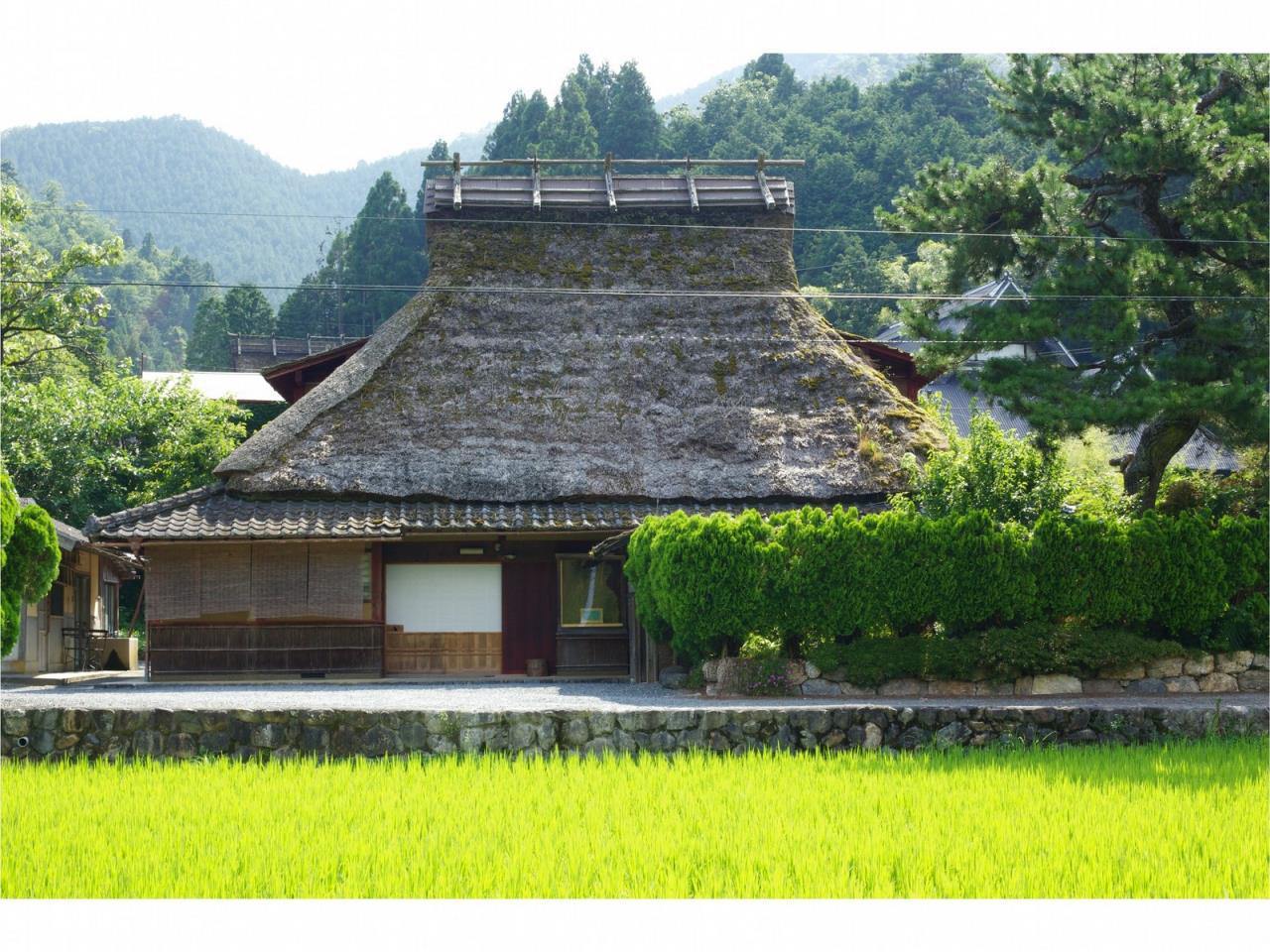
Miyama FUTON & Breakfast (Miyama F&B) has four thatched-roof houses for rent. Visitors can rent the entire traditional house to experience a life of luxury in Satoyama woodland. Each of the four houses has its own unique features, such as a house with a bar and a house with an expansive lawn. Our top recommendation is the house that has been nationally registered as a tangible cultural property. In this thatched-roof house, you will find a huge hearth in the center where you and your friends can gather and enjoy pot dishes and charcoal-grilled food. Don’t forget to take a look in the attic to see the inside of this historic thatched roof. Visitors can savor their time by relaxing on the sofa and listening to music on the audio system that has been installed. No matter how you choose to spend your time, the time spent in Miyama F&B will be extraordinary and memorable. It’s perfect for couples, three-generation families, and a large group of friends.
- Address
- 52 Shima-Kitsuneiwa, Miyama-cho, Nantan-shi, Kyoto
- Inquiries
- 0771-75-5125
- Official Website
- Official Website
- More Information
- The Gate to KANSAI
18.Yawata City: Shokado Garden
Join a tranquil tea ceremony in Kyoto renowned for its tea, and stroll through our Japanese garden immersing yourself in the traditions of Japanese culture.
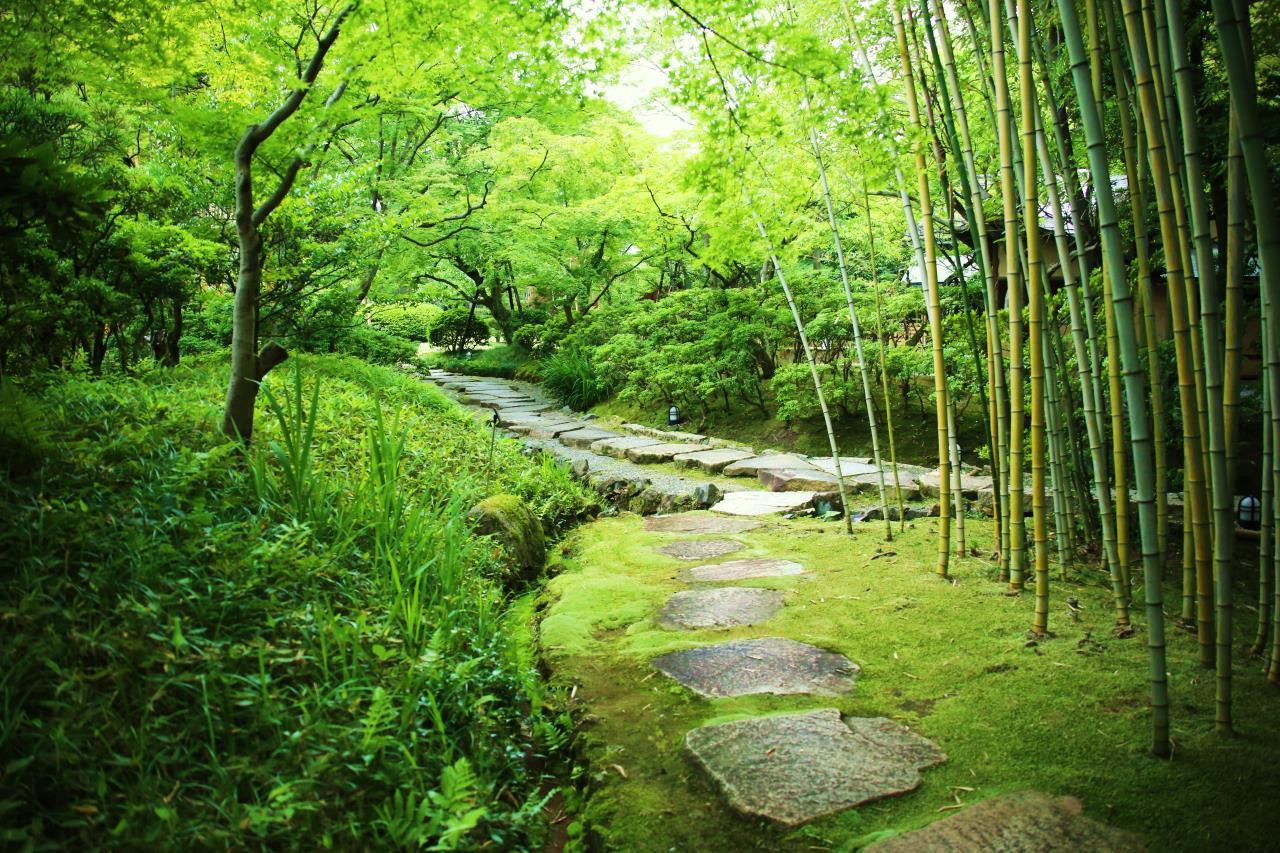
Shokado Garden covers a vast expanse of nature stretching 22,000m2 in Yawata City, Kyoto. This Garden has been designated as a national scenic spot, and visitors can walk along the stone-paved paths to thoroughly feel and view the aesthetic scenery decorated with Suikinkutsu (buried earthenware jar that creates a pleasant sound of water drops). There are plum trees, cherry trees, green maples, a bamboo grove, colorful foliage, and other seasonal flowers and trees. You will also find a pond with colorful carp, and you will feel the Japanese philosophy of wabi-sabi expressed through ornamental objects like splendid stone lanterns and others. Tea ceremonies are held on Sundays, from March to May and from October to November. Beginners are also welcomed to experience Kyoto’s tea ceremony culture. The colorful scenery that you can enjoy from the tea room will surely enhance the gracefulness of your tea time.
- Address
- 43-1 Yawata Ominaeshi, Yawata-shi, Kyoto
- Inquiries
- 075-981-0010
- Official Website
- Official Website
- More Information
- The Gate to KANSAI
19.Kyotango City: Cooking Class: Seko Crab Bowl with Taiza Crab
Make Seko crab bowl with Taiza crab and use your five senses to experience Kyoto by the sea!
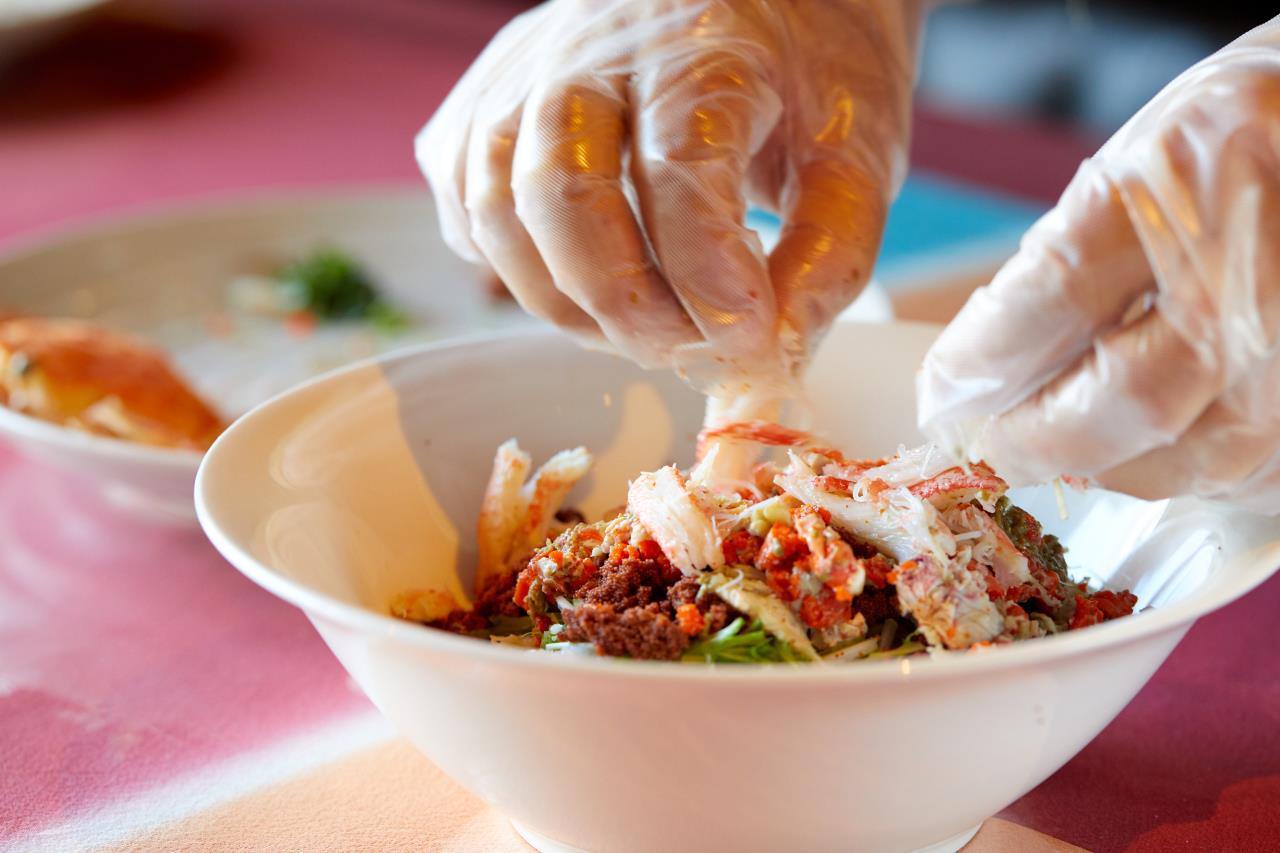
Taiza is one of the best crab fisheries in Japan. Totoya is a local inn that offers delicious menus loved through generations. Tourists can enroll in its cooking class to make a popular fishermen’s dish called Seko crab bowl. This class is only offered during Taiza’s Seko crab fishing season, which starts from November 6th and runs through December. Female Seko crabs that are used for this dish are small, but they are famous for their rich crab miso and plump-textured meat. The dish is completed when Seko crabs boiled in Kotobikihama salt water and Kyotango’s mizuna (Japanese mustard greens) are generously topped on a bed of rice. The crab meat has just the right amount of sweetness. The combination of this meat with the rich flavor of crab’s inner and outer eggs topped with sparkling eggs will be a treat for your taste buds. Don’t miss out on this fresh seasonal dish that can only be truly enjoyed by those that cook and eat in the location where its ingredients are gathered.
- Address
- 566 Taiza, Tango-cho, Kyotango-shi, Kyoto
- Inquires
- 0772-75-2639
- Official Website
- Official Website
- More Information
- The Gate to KANSAI
20.Nagaokakyo City: Nagaoka Tenmangu Shrine
Visit to see the flowers of Kyoto and take a casual stroll through Nagaoka Tenmangu Shrine famous for azalea and plum flowers.
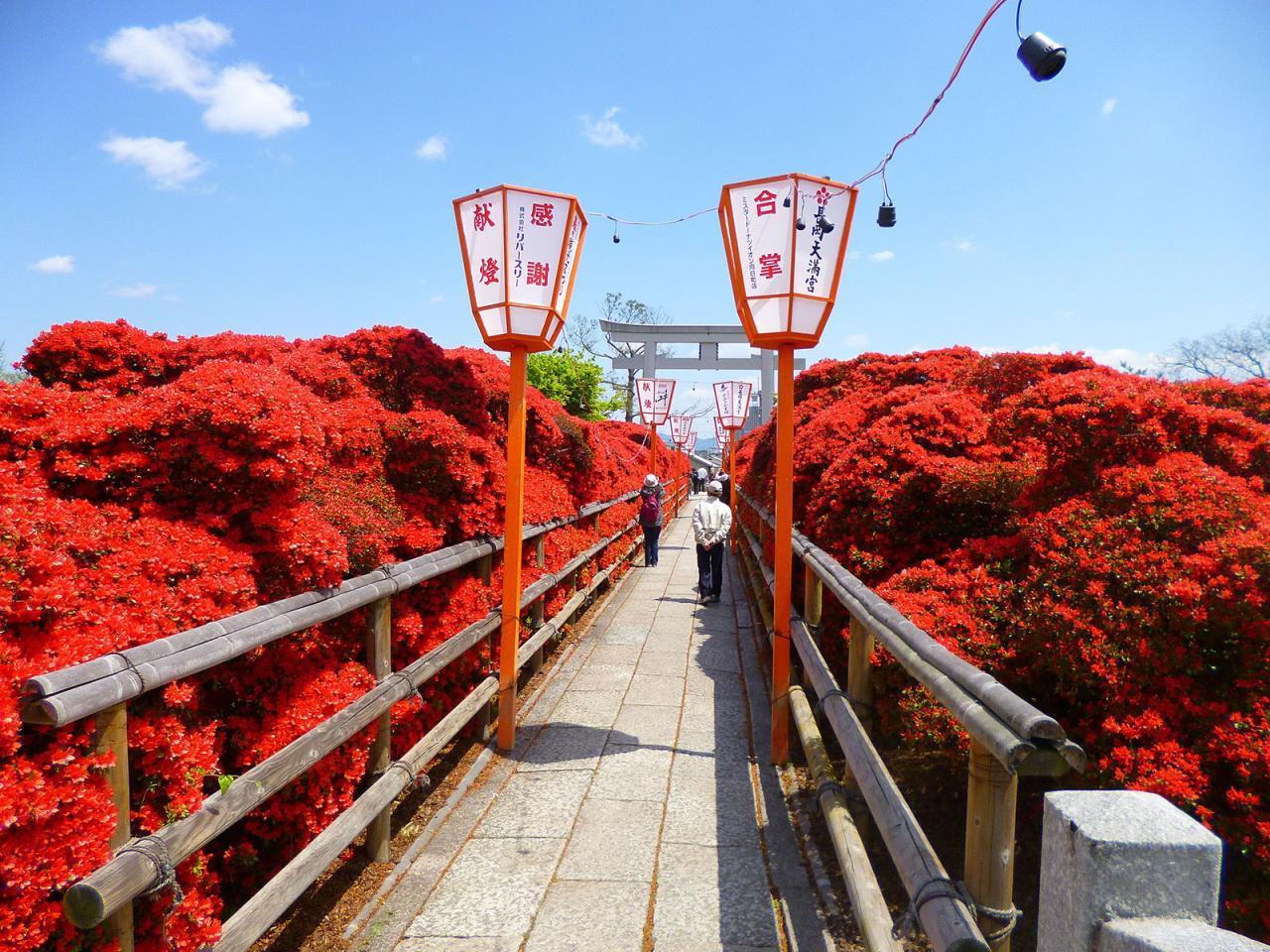
Nagaoka Tenmangu Shrine is devoted to the worship of Sugawara Michizane, the god of learning. This shrine is also known for its beautiful flowers that color various areas of the premises each season. Kirishima azaleas are particularly famous. Azalea trees aged 170 years come into full bloom around mid- to late April. Crimson walls of azaleas that bloom along the path from the torii gate to the shrine are also breathtaking. Crimson flowers beautifully decorate the vermilion-lacquered shrine in perfect harmony. and cherry blossoms arching over the pathway along the east bank of Hachijyo-ga-ike pond in the eastern area of the precinct are spectacular as well. Cherry blossoms reflected on the pond will emit a magical feel and captivate visitors. Take a stroll to enjoy plum blossoms, hydrangea, lotus, iris, rabbit-ear iris, and colorful foliage that repaint the landscape season by season. Feel the change in seasons with these beautiful and magnificent flowers.
- Address
- 2-15-13 Tenjin, Nagaokakyo-shi, Kyoto
- Inquiries
- 075-951-4500 (Nagaokakyo City Tourism Association)
- Official Website
- Official Website
- More Information
- The Gate to KANSAI
Check also...
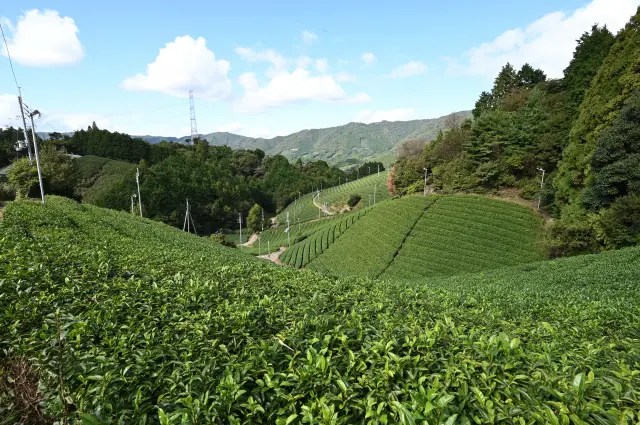
Kyoto: A Journey Through Japanese Gastronomy
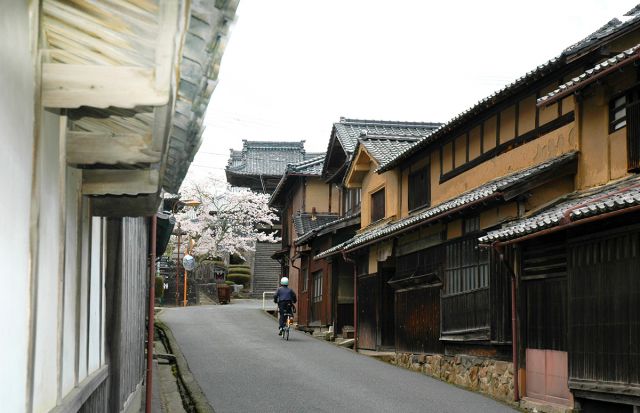
Tango Chirimen corridor, spinning and weaving silk for 300 years
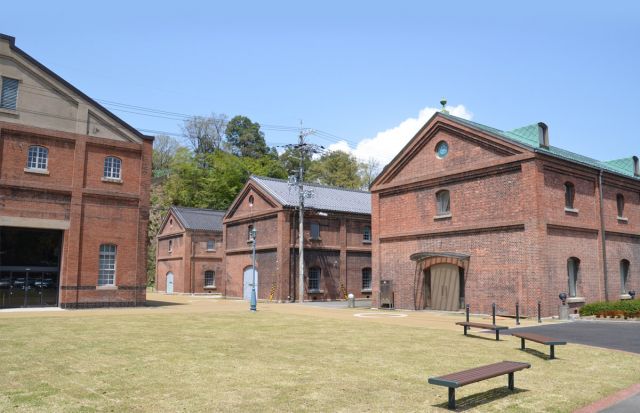
Chinju-fu (naval base) in Yokosuka, Kure, Sasebo and Maizuru:〜Cities where you can feel the dynamic modernization of Japan〜
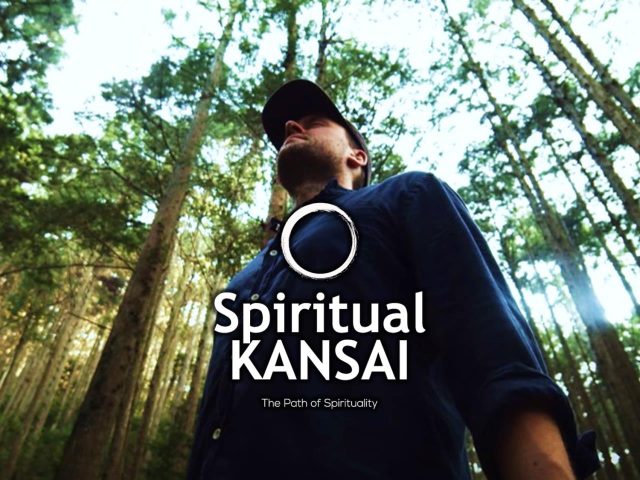
Spiritual KANSAI Series Blog14 : History and value of Shugendo
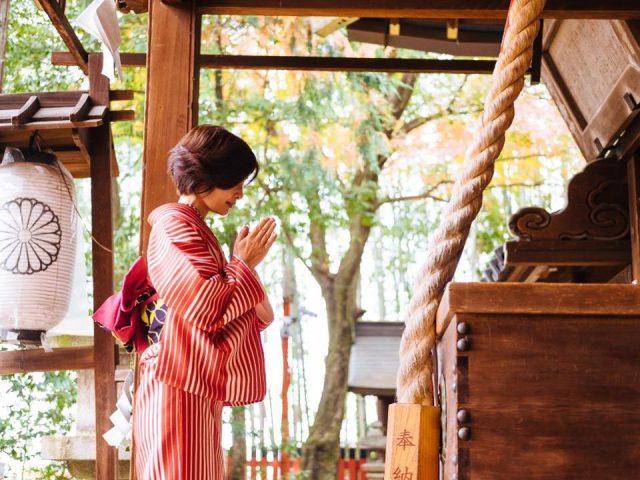
The Basics of Shrine Visiting! Must-Know Information and Some Recommended Shrines in Japan

Consider your accommodation in the Kansai area!

Restrictions on Large Baggage

